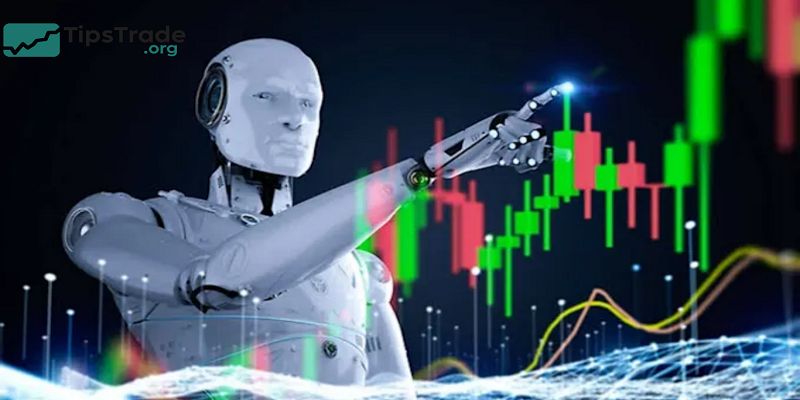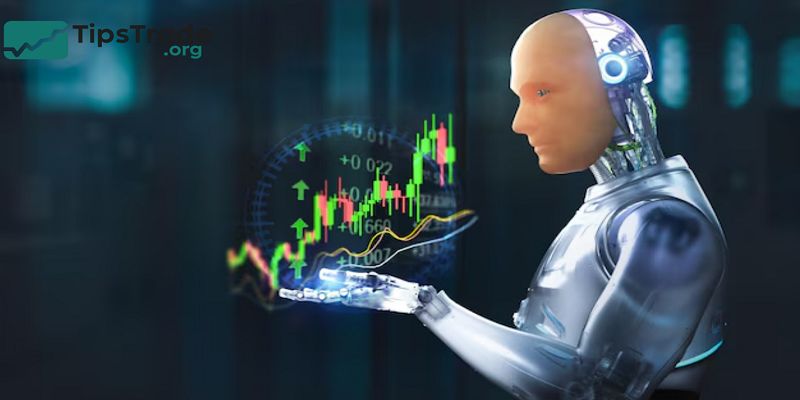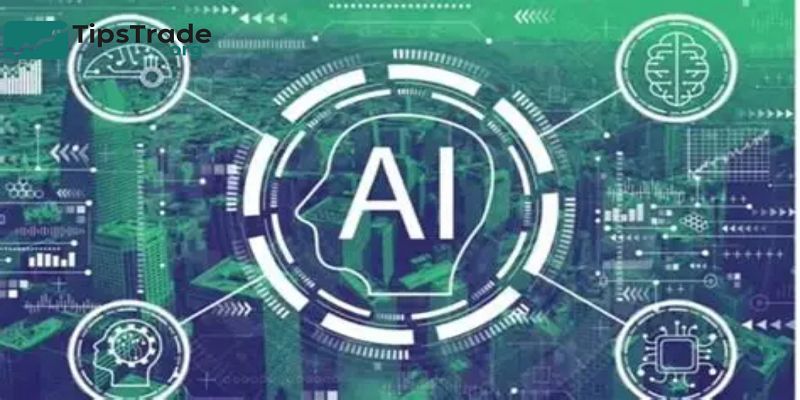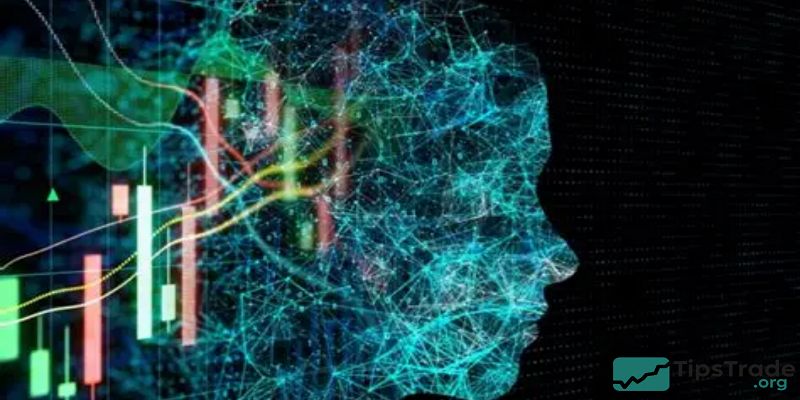AI trading models are transforming the way financial markets operate by using advanced algorithms and machine learning techniques to analyze vast amounts of data and make automated trading decisions. These models help traders identify patterns, predict market movements, and execute trades with speed and precision that humans cannot match. Understanding AI trading models is essential for investors who want to leverage technology to improve their trading performance and reduce risks. Visit tipstrade.org and check out the article below for further information
Understanding AI in Financial Trading
What Is AI Trading?

- AI trading refers to the use of machine learning algorithms and neural networks to analyze market data and make trading decisions automatically.
- Unlike conventional rule-based systems, AI models can adapt to new market conditions by learning from data instead of following static instructions.
- These systems rely on pattern recognition, data mining, and predictive analytics to determine when to buy or sell assets.
- The goal is simple — enhance accuracy, remove human bias, and increase consistency in trading outcomes.
In practice, AI trading is implemented across various markets:
- Stocks: Predicting price movements or earnings sentiment.
- Forex: Capturing macro-driven volatility.
- Crypto: Managing high-frequency trading in 24/7 markets.
The Evolution of Algorithmic & AI Trading
Algorithmic trading began as a way for institutions to automate large orders efficiently. However, the introduction of machine learning in the 2010s turned trading systems into intelligent agents capable of self-optimization.
Major milestones include:
- 2008–2015: Machine learning applied to quantitative models.
- 2016: DeepMind’s AlphaGo inspired reinforcement learning in trading.
- 2020–present: Use of NLP (Natural Language Processing) for sentiment-based prediction.
Today, the frontier has shifted toward generative AI, which can design and test new trading strategies autonomously — marking the next evolution of quantitative finance.
See more:
- Impact of Macroeconomic Factors on Stocks
- What is bid ask spread? Factors that influence bid ask spread
- Fundamental Analysis Stocks: Everything Investors Need to Know
- Technical Analysis for Stocks: The Complete Guide for Modern Investors
Core AI Models Used in Trading

Machine Learning Models
Machine learning (ML) is the foundation of AI trading. It involves algorithms that learn from data without being explicitly programmed. Common ML models include:
- Linear Regression: Estimates relationships between variables like volume and price.
- Random Forest & Gradient Boosting: Handle non-linear relationships in market data.
- Support Vector Machines (SVM): Classify bullish vs. bearish patterns.
These models are often used for trend forecasting, price classification, or volatility prediction. However, their accuracy depends heavily on the quality of training data and parameter optimization.
Deep Learning Models
Deep learning (DL) takes AI trading to another level by using multi-layer neural networks to uncover complex relationships that simple ML models can’t detect.
- Recurrent Neural Networks (RNN) and Long Short-Term Memory (LSTM) models excel at analyzing time-series data, such as stock prices or exchange rates.
- Convolutional Neural Networks (CNN) can detect visual or structural patterns in candlestick charts.
- Transformers (like those behind ChatGPT) are being applied to analyze text-based sentiment in financial news.
For example, an LSTM model trained on five years of S&P 500 data might predict intraday reversals or continuation patterns with notable precision.
Reinforcement Learning in Trading
- Reinforcement Learning (RL) is one of the most powerful — and complex — approaches to AI trading.
- In RL, an agent learns by interacting with an environment and receiving rewards for successful actions.
- In trading, that environment is the market. The agent tries various strategies — buying, selling, or holding — and receives feedback based on profit and loss.
- Over time, it learns which sequences of actions lead to the best performance.
- Notable examples include Deep Q-Learning and Policy Gradient methods used to optimize trading policies in dynamic conditions.
- However, RL models require vast computational resources and careful tuning to avoid overfitting.
Natural Language Processing (NLP) for Market Sentiment
Financial markets react not only to numbers but also to narratives. NLP models interpret human language — from news headlines to social media — to gauge market sentiment.
- FinBERT and GPT-based sentiment models can analyze thousands of articles daily to detect bullish or bearish tones.
- These insights are particularly valuable in crypto and equities, where retail sentiment drives short-term price swings.
For instance, an NLP model may detect increasing optimism in Tesla-related tweets, signaling potential upward momentum before it’s visible in the price chart.
How AI Trading Models Work
Data Collection and Preprocessing
The foundation of every AI trading model is data — the more accurate and diverse, the better.
AI models use multiple sources, such as:
- Historical prices, volumes, and order book depth.
- Macroeconomic indicators (interest rates, GDP).
- News sentiment and social media data.
Before training, this data must be cleaned, normalized, and structured. Outliers and missing values are handled through statistical techniques to avoid bias.
Proper preprocessing ensures the model learns genuine patterns, not noise.
Model Training and Backtesting
Model training involves feeding preprocessed data into an algorithm to help it identify patterns. Traders often split data into training, validation, and testing sets to prevent overfitting.
Backtesting allows them to test how the model would have performed on past data. Key metrics include:
- Sharpe Ratio – measures risk-adjusted returns.
- Maximum Drawdown – evaluates downside exposure.
- Win Rate / Profit Factor – indicates consistency.
Example: a neural network trained on EUR/USD data from 2015–2023 can be backtested to see how accurately it predicts breakouts or reversals.
Model Deployment and Live Trading
- Once validated, the model is connected to trading platforms through APIs (like MetaTrader, Interactive Brokers, or Alpaca).
- The model executes trades automatically, based on real-time data.
- Live trading involves challenges such as latency, slippage, and dynamic market regimes.
- Hence, continuous monitoring and retraining are essential.
- Many traders use cloud platforms like AWS SageMaker or Google Vertex AI for scalability and stability.
Advantages and Limitations of AI Trading Models
Key Benefits
- Emotion-Free Decisions: AI models eliminate psychological biases like fear or greed.
- Speed and Efficiency: They analyze millions of data points in milliseconds.
- Continuous Optimization: Models improve with retraining and new data.
- Diverse Application: Works across markets — equities, forex, crypto, and commodities.
A 2024 Deloitte report found that funds adopting AI-based trading improved portfolio efficiency by 15–20% compared to traditional quant methods.
Limitations and Risks
AI systems are not magic bullets. Their main limitations include:
- Overfitting: Models that perform well on backtests may fail in live trading.
- Black-Box Nature: Difficult to interpret model decisions.
- Data Bias: Inaccurate or incomplete data can skew predictions.
- Regime Shifts: AI struggles during unprecedented events like COVID-19 or market crashes.
Therefore, human oversight remains essential. The best results come from hybrid trading setups — where AI handles execution, while humans handle strategy and risk.
Building Your Own AI Trading Model
Step-by-Step Guide
- Define Objective: e.g., predict price direction or volatility.
- Collect Data: Use APIs from Yahoo Finance, Quandl, or Binance.
- Preprocess Data: Clean, normalize, and engineer features.
- Choose Model: Start with Random Forest or LSTM.
- Train and Validate: Split data (70/20/10 rule).
- Backtest Strategy: Measure Sharpe ratio and drawdown.
- Deploy and Monitor: Use trading APIs for live execution.
Recommended Tools and Frameworks
| Category | Tools/Platforms |
| Programming Languages | Python, R |
| ML/DL Libraries | TensorFlow, PyTorch, Scikit-Learn |
| Trading Platforms | QuantConnect, MetaTrader, Alpaca |
| Cloud & APIs | AWS Sage Maker, Google Vertex AI |
| Data Sources | Alpha Vantage, Yahoo Finance, Binance API |
These frameworks allow traders to prototype, test, and deploy AI strategies quickly without reinventing the wheel.
Practical Example
Let’s consider a Long Short-Term Memory (LSTM) model predicting Apple (AAPL) stock movements:
- Input Data: Daily OHLC, moving averages, RSI, and volume (5 years).
- Model: LSTM trained to predict next-day price direction.
- Performance: Sharpe Ratio = 1.6; Accuracy = 68%.
The example illustrates that AI can provide an edge — but success still depends on robust data, regular retraining, and disciplined risk control.
Ethical, Regulatory, and Security Considerations
Compliance and Regulation
AI-driven trading must comply with frameworks like:
- SEC (U.S.) – ensuring market fairness and preventing manipulation.
- ESMA (Europe) – algorithmic transparency rules.
- MAS (Singapore) – responsible AI use in finance.
Regulators increasingly demand explainability for AI decisions, ensuring traders understand why a model acted a certain way.
Data Privacy and Security
AI systems process massive financial datasets, making cybersecurity crucial.
- Encrypt sensitive data.
- Use secure cloud storage.
- Implement audit trails for model actions.
A compromised trading bot or data leak can lead to severe financial and reputational loss.
Ethical AI in Trading
Ethical AI ensures fair and transparent market participation:
- Avoid manipulative trading behavior.
- Prevent data or sentiment exploitation.
- Follow Responsible AI principles (accountability, transparency, bias mitigation).
Major institutions like BlackRock and JPMorgan now integrate Ethical AI Committees to oversee model governance.
The Future of AI Trading

Emerging Trends
- Generative AI for Strategy Design: AI can now create new strategies from scratch.
- AutoML: Simplifies model selection and tuning.
- DeFi + AI Integration: Autonomous agents manage decentralized portfolios.
- AI Trading Assistants: Natural language bots guiding retail traders.
According to McKinsey (2025), AI-driven assets under management (AUM) could exceed $2 trillion by 2030.
Human + AI Collaboration
- The most sustainable trading model is not full automation — but collaboration.
- AI handles computation, pattern recognition, and execution; humans provide judgment, context, and ethics.
This synergy leads to smarter and safer decisions. The future trader is not replaced by AI — they’re enhanced by it.
Conclusion
AI trading models are redefining how the world trades — delivering precision, scalability, and insight at unprecedented levels. While these systems can offer consistent profits and operational efficiency, they are not “set and forget” tools. Success in AI trading requires data quality, model discipline, and human oversight. In the next decade, AI will become a co-pilot for traders, empowering them to make faster, fairer, and more informed decisions across all markets.
>>See more:

